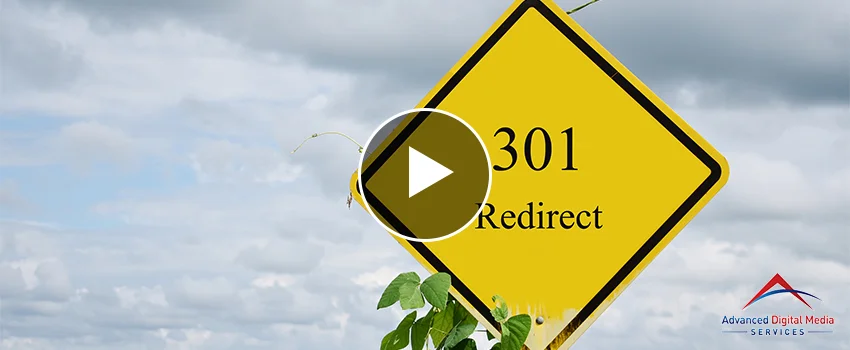Are you planning to move certain content from one webpage to another, or are you planning to redesign your entire website without using the old URLs? If you answered yes to either of these questions, you must be thinking that doing so might affect your ranking on search results.
Whether you are setting up a new page or an entire website, and you think using the same URL is not practical, it is essential to know the correct practice. Changing URLs, when done incorrectly, nullifies all the SEO work done on the old URLs used. This incorrect change in URLs, in turn, leads to having a low ranking on search results, causing organic traffic to plummet.
The good news is that you don’t have to start from scratch as far as SEO is concerned. You can use a 301 redirect to route organic traffic to your new pages or website permanently.
What Is a 301 Redirect?
A 301 redirect tells search engines, such as Google, that content from an old webpage has been permanently moved to another webpage. So, how does a 301 redirect work? It directs visitors who click on the old URL to the new URL.
For example, a website owner wants to rebrand and change the URL of his website. If some of its previous visitors search for the website on Google, and the URL that pops up is the old one, clicking it will direct them to a “404 error” message. That is when 301 redirects come in handy.
Redirects allow visitors to reach the new webpage or website even if the URL they click is the old one. The same happens when a blog or content from an old page is linked, and someone clicks it. A “404 error” message will also appear on the screen.
As mentioned, visitors will get a “404 error” message without redirects, and it doesn’t look great for the company that owns the website. If anything, “404 error” messages tell visitors that the website owner does not prioritize a good user experience. With redirects, preventing that error is easy, leading to a better user experience on the visitors’ end.
When to Use 301 Redirects?
If you are wondering about when you should use 301 redirects, here are some of the possible cases wherein they can be helpful:
- When changing URLs, regardless of the purpose
- When recreating website content
- When consolidating several web pages with overlapping content
- When transferring content from one domain to another
- When rebuilding a website using a phased-launched approach
Is 301 Redirect Good for SEO?
Many SEO experts study the relationship between PageRank and 301 redirects. If you are not familiar with PageRank, it is the formula used by Google to determine a page’s value and authority based on the quality and quantity of its links. Although PageRank is not the only factor used by Google, experts generally believe that a higher PageRank gives a higher ranking on search results.
Back then, using redirects would cause a significant loss of PageRank. No one knows how much from the whole percentage is lost except Google. The good news is that using redirects won’t cause a website to lose its PageRank anymore, starting in 2016. That update is of great help, specifically in driving organic traffic to a rebuilt webpage or website, and it just proves that using 301 redirects is a great SEO practice. Here are more SEO benefits of using redirects:
Increasing Conversion Rates
When visitors receive “404 error” messages, there is a possibility that they will never revisit the same website due to inconvenience. With redirects, however, they are quickly directed to the new website that they can navigate. A good user experience through redirects keeps visitors engaged on a website, leading to higher conversion rates.
Preserving Link Equity
Link equity is a search engine ranking factor based on the idea that some links pass value and authority from one page to another. Unlike some other types of redirects — such as 302, in which passing link equity is not possible — 301 redirects are proven to pass approximately 90% of the value and authority of the old page to the new one.
Removing the old URLs from Search Engines’ Indices
When search engine spiders encounter redirects while navigating your website, it tells them that there is a need to remove old URLs from their indices. After that, they replace the old URLs used with new ones. In the meantime, human visitors who are uninformed about the new URLs and still attempt to access certain websites using their old URLs will be redirected to the new ones.
How Advanced Digital Media Services Can Help
Setting up redirects, when done correctly, maximizes the SEO strategies put in place for your website.
At Advanced Digital Media Services, we can help you reorganize, rebuild, or replace your old website with a new one. We utilize the best SEO practices, so expect flawless results from our services. With the knowledge of our SEO experts, you won’t have to worry about how to set up a 301 redirect by yourself. If you have any inquiries or questions about SEO services, feel free to contact us.





